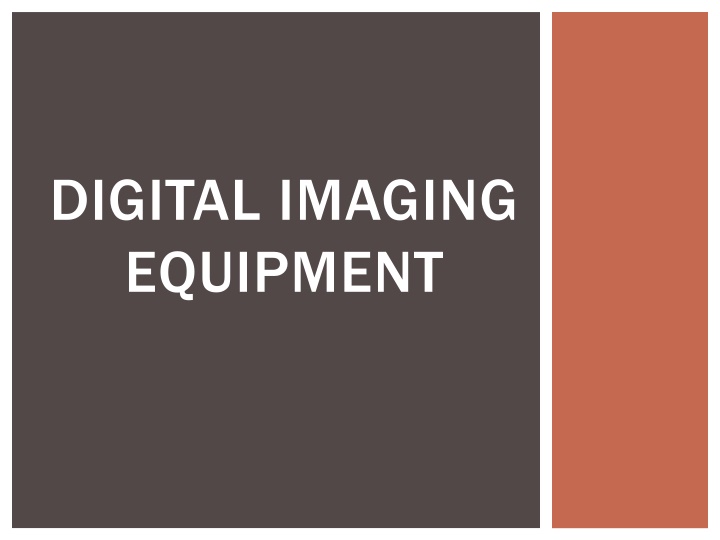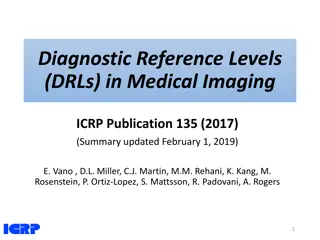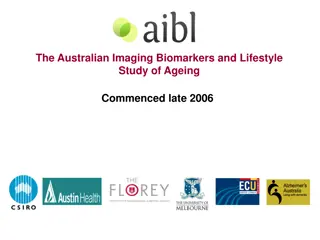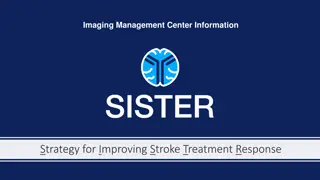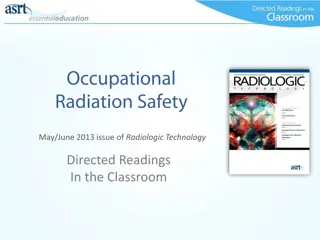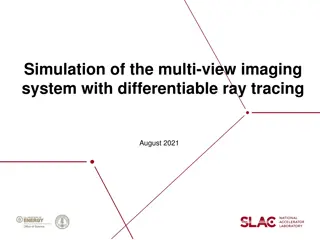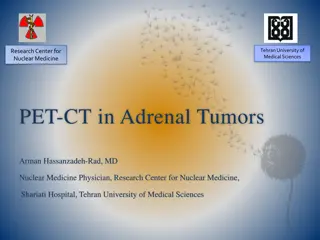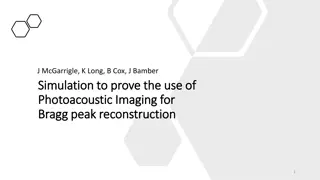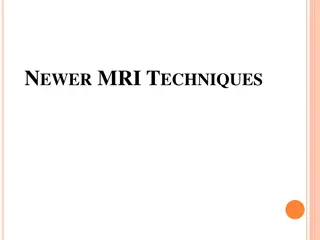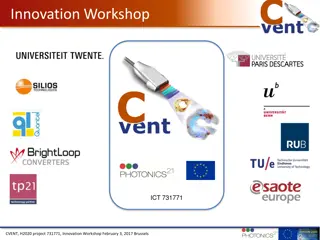Advanced Imaging Technologies in Healthcare
Explore the world of digital imaging equipment including computed tomography (CT) scanners and magnetic resonance imaging (MRI) machines. Discover how these technologies work, their uses in medical diagnosis, and important facts to consider. Learn about the risks associated with CT scans and the benefits of MRI scans in providing detailed soft tissue images for accurate diagnosis.
Download Presentation

Please find below an Image/Link to download the presentation.
The content on the website is provided AS IS for your information and personal use only. It may not be sold, licensed, or shared on other websites without obtaining consent from the author.If you encounter any issues during the download, it is possible that the publisher has removed the file from their server.
You are allowed to download the files provided on this website for personal or commercial use, subject to the condition that they are used lawfully. All files are the property of their respective owners.
The content on the website is provided AS IS for your information and personal use only. It may not be sold, licensed, or shared on other websites without obtaining consent from the author.
E N D
Presentation Transcript
DIGITAL IMAGING EQUIPMENT
COMPUTED TOMOGRAPHY (CT)
CT scanner
HOW IT WORKS Provides high-resolution cross-sectional anatomical images Table moves through a circular opening in the CT scanner called the gantry, while an x-ray tube emits x-rays as it spins 360 degrees inside the gantry A detector array measures the amount of x-rays that pass through the anatomic part and cross- sectional images are generated from data.
USES Detects and confirms the presence of tumor Guides a biopsy Helps plan and monitor radiation and surgical treatment Helps diagnose problems with blood vessels and the heart Used for diagnosing abnormalities of the: Brain, nasal passages, musculo-skeletal system, spine, abdomen, lungs and mediastinum
OTHER FACTS Average scanning time per anatomic region is only 10-20 seconds therefore many patients can be examined under sedation instead of anesthesia General anesthesia and is necessary for thorax imaging to control respiration and for timed contrast imaging to control movement Ensures the clearest and most accurate images
RISKS CT scans should be avoided during the first trimester of pregnancy Animals must be sedated or under anesthesia
MAGNETIC RESONANCE IMAGING (MRI)
MRI Machine
HOW IT WORKS Uses magnetic fields and radio waves to diagnose diseases and injury of soft tissue The atoms comprising soft tissue align with the magnetic field in the machine Radio waves pulsed into the field alter the atoms causing signals to be released and transmitted to a computer Signals then show up as either light or dark areas in the computer image
HOW IT WORKS CONTD. Primarily used to examine internal organs for abnormalities Imaging of large patients is limited to the limbs and head due to size constraints
USES Diagnosing abnormalities of the brain, spinal cord, and musculoskeletal system Diagnose or monitor treatment for conditions such as: Tumors of the chest, abdomen or pelvis Certain types of heart disease Blockages, enlargements or anatomical variants of blood vessels Diseases of the gastrointestinal tract Cysts and solid tumors in the kidneys or other urinary tract organs
RISKS Radio-frequency energy to excite molecules is similar to those from a radio or TV station Caution must be taken in patients with metal implants or pacemakers Requires general anesthesia to ensure the clearest and most accurate image possible
DIGITAL FLUOROSCOPY
HOW IT WORKS Digital images are acquired at a rate of 1-8 frames per second The unit is used for myelography, contrast GI tract studies, and small animal general diagnostic imaging.
USES Special procedures such as angiography, venography, cardiac fluoroscopy, or evaluation for dynamic tracheal disease
SAFETY WHILE OPERATING Only persons required for a fluoroscopic procedure should be in the room during the procedure Use the smallest possible beam area, thereby reducing the scatter radiation to personnel. Fluoroscopic doses can also be minimized by reduction in the fluoroscopic time used Use the shortest possible distance from the image intensifier to the animal to reduce scattered radiation levels.
DIGITAL OR COMPUTED RADIOGRAPHY
HOW IT WORKS Computed Radiography uses a cassette system with imaging plate that contains photostimulable storage phosphors. The phosphors detect and store energy from the x-rays that strike the cassette. The light is captured, recorded, and processed into an image by a computer. The imaging plate is then erased by fluorescent light in the scanner, and is ready to be used again.
HOW IT WORKS Digital Radiography has no processing or erasing step Provides an instant digital image similar to a digital camera
HOW IT WORKS CONTD. The digitized image can be manipulated: changing contrast and brightness, zoom in or out, and take measurements Images are stored in a secure file that is difficult to alter
USES Provides information about the internal architecture of abdominal organs, bones and areas such as the pelvic canal.
SAFETY WHILE OPERATING Limit the X-Ray beam to the smallest area possible Align the X-ray beam properly with the animal and the image receptor Remain behind a protective barrier during the entire radiographic exposure Wear protective gloves and aprons having a lead equivalent of not less than 0.5 millimeter
RISKS Some radiographs require sedation or general anesthesia
HOW IT WORKS Uses sound waves to produce images of organs. Sound waves sent into the body are reflected off of an internal tissue interface. Hundred of these reflected signals provide an image of the organ, which can be visualized on the ultrasound machine monitor.
USES Areas frequently viewed with ultrasound: Thorax, abdomen, eyes, brain, and tendons View abnormalities of organs and provides guidance for biopsies
RISKS The ultrasound exam is painless, most patients require no sedation or anesthesia, and tolerate the procedure well.
NUCLEAR SCINTIGRAPHY
HOW IT WORKS An animal is injected with a short-lived radioactive isotope which travels to specific organs/tissues
USES Identifying lameness in equine patients where the cause of the lameness is difficult to localize by conventional methods Detects Porto systemic shunts, sub-clinical renal failure, and hyperthyroidism Evaluation of mucociliary clearance
RISKS The animal is administered radioactive elements called isotopes or tracers that go through the bloodstream to the target organ Patient is usually isolated 12-24 hours after the exam to allow the body to become clear of the radioactive tracers
HOW IT WORKS a small camera is guided throughout the body via naturally existing orifices (nose, mouth,etc) Can reach most parts of the body without the need for open surgery
USES Observe internal structures without surgery Assists with diagnosis Minimally invasive surgeries (biopsy)
TYPES OF ENDOSCOPY Gastrointestinal Tract Esophagogastroduodenoscopy: esophagus, stomach and duodenum Enteroscopy: small intestine Colonoscopy, sigmoidoscopy: large intestine/colon Proctoscopy: rectum and anus Respiratory tract Rhinoscopy: nose Bronchoscopy: lower respiratory tract
TYPES OF ENDOSCOPY Ear: otoscope Urinary tract: cystoscopy Female reproductive system: gynoscopy Colposcopy: cervix Hysteroscopy: uterus Falloposcopy: fallopian tubes Closed Body Cavities Laparoscopy: abdominal or pelvic cavity Arthroscopy: interior of a joint Thoracoscopy and mediastinoscopy: chest organs
RISKS Patient is usually anesthetized Complications (such as perforation of organs) due to the exam rarely occur Tearing of tissue may require surgical repair
HOW IT WORKS Pet lies on its right side or stands Conductive gel or alcohol is applied to the skin to better transmit the electrical activity Clip or plate electrodes are attached to the pets limbs and chest wall which are attached to thin lead cables connected to the machine Typical recording duration is 30 seconds to 2 minutes
USES Reveals abnormalities of heart rate and electrical rhythm. Screening test for serious heart disease, but should be used in conjunction with stethoscope exam, chest x-ray and echocardiogram
SAFETY AND RISK Neither sedation or anesthesia is needed Some animals resist restraint and may need to be sedated, but it is not recommended due to the potential influence on the heart This exam is noninvasive and is not painful
